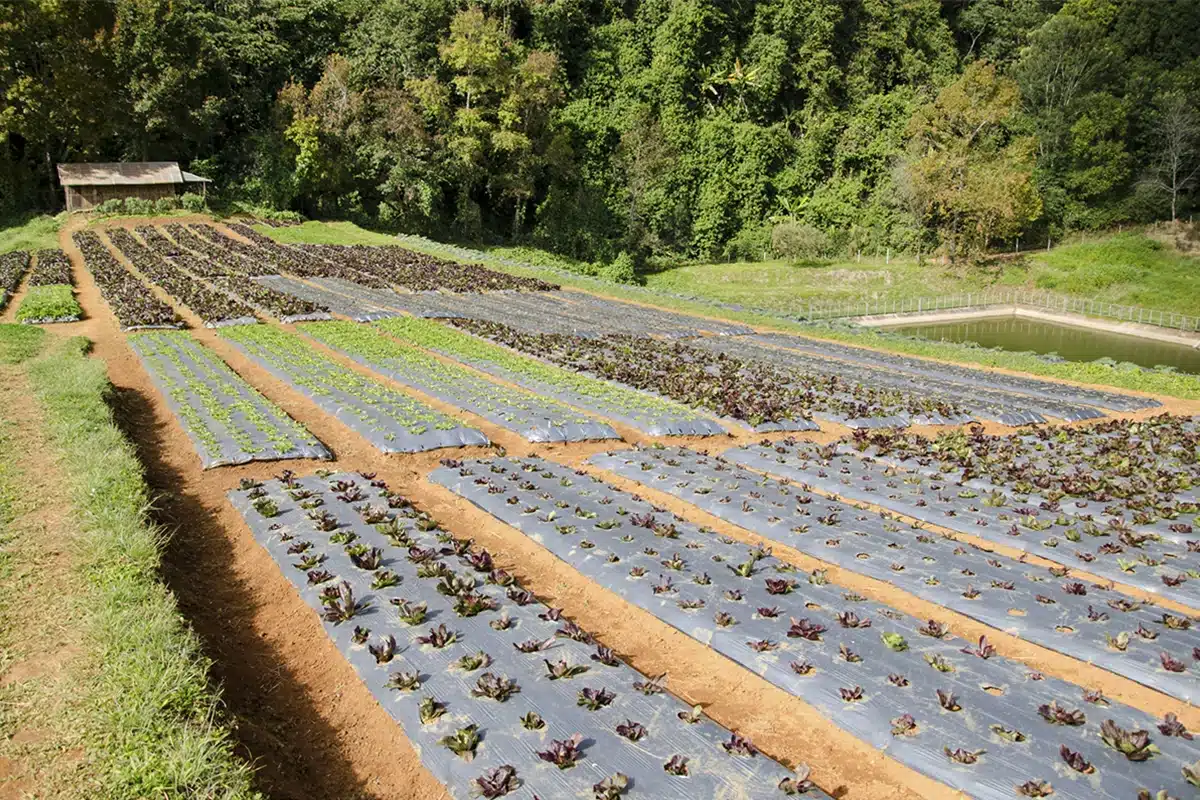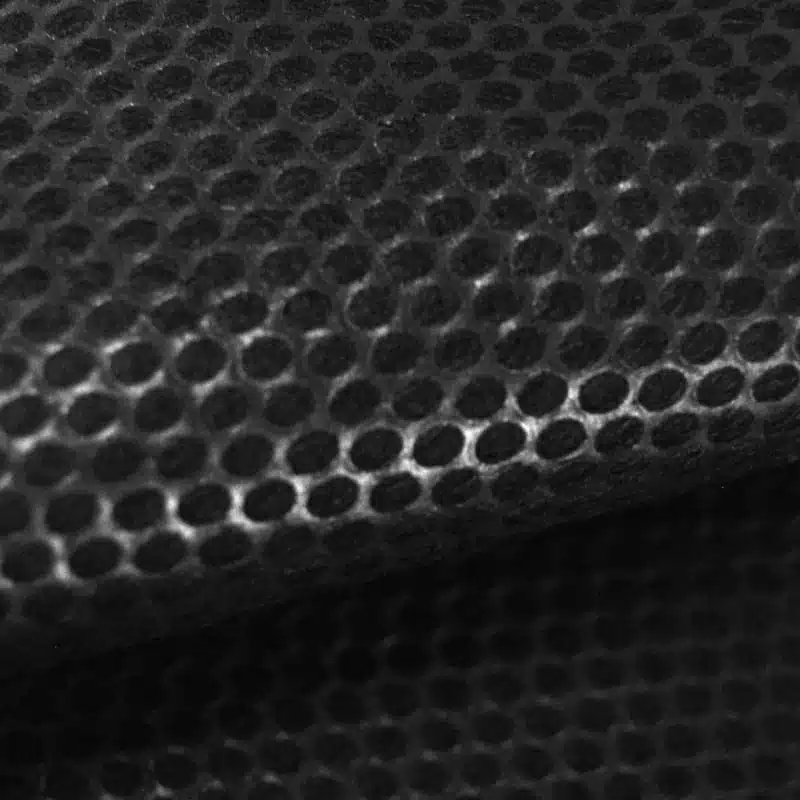+86-159 9860 6917
info@geofantex.com
geofantex@gmail.com
+86-400-8266163-44899
Landscape fabric is a valuable tool in gardening and landscaping, helping to control weeds while allowing water and nutrients to pass through to the soil. However, many gardeners wonder about the correct way to install landscape fabric, particularly which side should face up. The slightly shiny side is typically designed to be more durable and is intended to face up, providing better weed control and stability. In this article, we’ll answer common questions related to landscape fabric installation, including how to determine the top and bottom sides, the best way to lay it down, and considerations for its long-term effectiveness.
Is there a top or bottom side to landscape fabric?
Landscape fabric typically has a designated “top” and “bottom” side, though it can vary slightly depending on the manufacturer. Here’s a breakdown of the typical structure:
Top vs. Bottom:
- Top side: The top side of the fabric usually has a rough texture or is a bit more durable. This side is typically designed to face upward toward the sunlight and air. It helps prevent damage from UV rays and supports the fabric’s ability to resist weathering.
- Bottom side: The bottom side often has a smoother texture and may be treated with a coating to aid in water permeability. This side should face the soil to help with drainage and keep the fabric securely in place against the earth.
Installation Tips:
- Lay the fabric over the soil, making sure the bottom side faces down.
- Overlap the edges of the fabric by at least 3 to 6 inches to prevent weeds from growing between seams.
- Pin the fabric in place with landscape staples or pegs, ensuring it is taut and flat to avoid air pockets.
- Cover the fabric with mulch or gravel to protect it from UV rays, which can degrade it over time.
Best Practices:
- Weed prevention: Ensure the fabric is properly installed with adequate overlap to keep weeds from slipping through.
- Maximize drainage: Do not place the fabric too deeply into the soil. The goal is to allow water and air to move freely while keeping the soil underneath moist and well-drained.
- Protection from UV damage: Consider using a layer of mulch on top, which will also help prevent the fabric from being exposed to harmful sunlight and provide aesthetic benefits.
By following these guidelines, landscape fabric will help prevent weeds, improve drainage, and enhance the longevity of your landscaping efforts.

Which way do you lay landscape fabric?
To properly lay landscape fabric in a garden for weed control and to promote healthy plant growth, follow this detailed step-by-step guide:
Orientation of the Fabric: The fabric should be laid with the smooth, shiny side facing up. The rough side goes against the soil. The smooth surface helps water pass through while blocking sunlight, which is key to preventing weed growth.
Preparing the Area:
- Tools & Materials Needed: You’ll need landscape fabric, a utility knife or scissors, landscape staples or pins, a rake, a shovel, and possibly some gravel or mulch to cover the fabric.
- Step 1: Remove any existing weeds or grass in the area. You can do this manually, with a hoe, or by using a weed killer.
- Step 2: Smooth out the soil with a rake, leveling it to avoid any bumps or lumps that could interfere with fabric laying.
Overlapping Seams:
- When using multiple pieces of fabric, overlap the edges by at least 3-4 inches. This will ensure there are no gaps for weeds to sneak through.
- If possible, consider using a single large roll to minimize seams.
Securing the Fabric:
- Use landscape staples or pins to secure the fabric along its edges and in the middle at regular intervals (around every 12-18 inches).
- Ensure the fabric is taut but not too tight. This will help prevent it from shifting or blowing away in the wind.
Considerations for Drainage and Moisture Retention:
- Landscape fabric is permeable, allowing water to pass through while blocking weed growth. However, to prevent waterlogging, ensure your soil has good drainage before laying the fabric.
- If you are laying it under mulch, it will help retain moisture, but if used alone, make sure to water the area properly, as the fabric could slow down water penetration.
By following these steps, you can effectively control weeds and create an environment conducive to plant health.
Should landscape fabric go before or after soil?
Landscape fabric should be laid after you have prepared the soil but before adding any topsoil, mulch, or other ground cover. Start by clearing the area of any existing weeds, rocks, or debris, and then level the soil. Once the soil is prepared, unroll the landscape fabric above the soil and secure it in place. After the fabric is in position, you can cover it with mulch, gravel, or other materials to complete your landscaping project. This method ensures that the fabric acts as a barrier, preventing weeds from growing through the soil while still allowing your plants to thrive.
Does landscape fabric get clogged?
Over time, landscape fabric can gradually become clogged with dirt and debris, as well as organic matter, especially if it’s installed in areas with heavy foot traffic or where a lot of organic material is present. When the fabric becomes clogged, its ability to allow water and nutrients to pass through to the soil can be compromised. To prevent clogging, it’s important to use high-quality fabric and maintain it by occasionally removing the top layer of mulch or soil and gently cleaning the fabric surface. Additionally, installing the fabric correctly, with proper overlap and securing, can help reduce the chances of clogging.
Knowing which side of landscape fabric goes up is crucial for its effectiveness in weed control and soil protection. By identifying the top and bottom sides, laying the fabric correctly, and understanding the best practices for installation and maintenance, you can ensure that your landscape fabric performs well over time. Whether you’re starting a new garden or maintaining an existing one, proper use of landscape fabric can help keep your garden weed-free and healthy.



Get Free Sample
We’ll respond as soon as possible(within 12 hours)






















